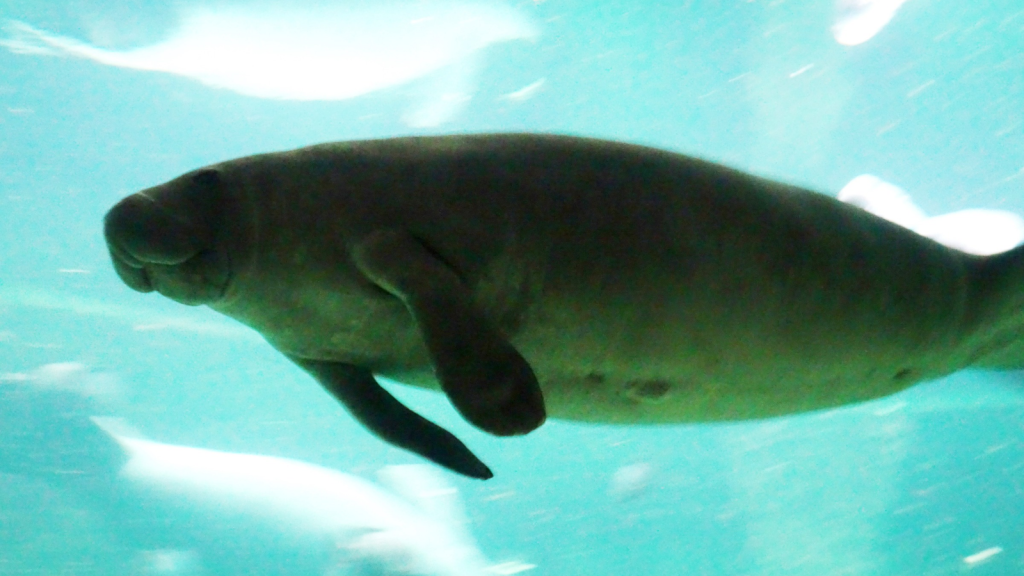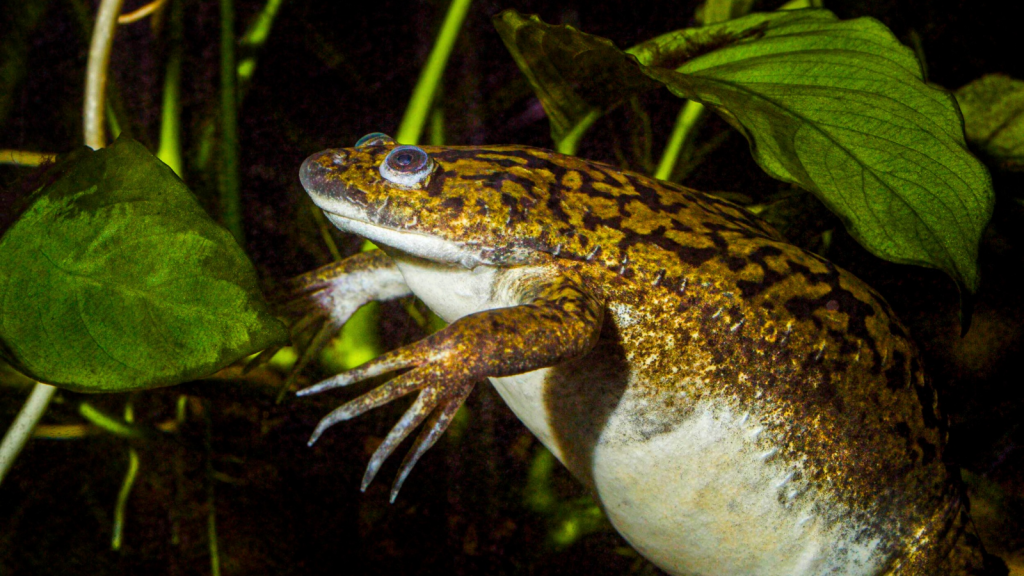Africa’s wetlands are a hidden treasure trove of life, teeming with creatures both big and small. These watery havens, from the vast Okavango Delta to the winding Nile River, support an incredible array of wildlife. Some of these animals are found nowhere else on Earth, while others have adapted in fascinating ways to thrive in these unique environments. From nimble fish-catching birds to massive mammals that spend their days wallowing in the shallows, the wetlands are full of surprises. Join us as we explore 15 of the most amazing creatures that make their homes in Africa’s lush, water-rich landscapes.
1. Shoebill Stork

This prehistoric-looking bird is a master of patience and stealth. With its massive, shoe-shaped bill, the shoebill can crush hard-bodied prey like lungfish and even small crocodiles. It stands motionless for hours, waiting for the perfect moment to strike with lightning speed. Found in the swamps of East Africa, this unique bird is a true wetland specialist. Shoebills have an unusual way of cooling down in the hot African sun: they defecate on their own legs, and as the liquid waste evaporates, it helps lower their body temperature.
2. Hippopotamus

These enormous mammals spend most of their time submerged in rivers and lakes to keep cool. Despite their bulky appearance, hippos are surprisingly agile in water. They come ashore at night to graze on grass, travelling up to 10 kilometres from their watery homes. Hippos are vital to wetland ecosystems, their dung providing essential nutrients for fish and other aquatic life. A group of hippos is called a “bloat,” and they communicate underwater through a series of clicks and grunts that can travel for miles through the water.
3. Nile Crocodile

As one of Africa’s apex predators, the Nile crocodile is perfectly adapted to life in wetlands. These ancient reptiles can grow up to 6 metres long and are capable of taking down large prey like wildebeest. They’re expert ambush hunters, using their powerful tails to propel themselves through the water with surprising speed. Nile crocodiles are also one of the few species that care for their young, guarding their nests and carrying hatchlings to water in their mouths. Their powerful jaws can exert a bite force of up to 5,000 pounds per square inch, the strongest of any living animal.
4. African Fish Eagle

With its distinctive white head and chestnut body, the African fish eagle is a striking sight over wetlands. These skilled hunters pluck fish from the water’s surface with their powerful talons. Their loud, haunting calls are often described as the sound of Africa. Fish eagles mate for life and return to the same nesting sites year after year. They have excellent eyesight, able to spot fish from up to 1.5 kilometres away, and can dive at speeds of up to 160 kilometres per hour to catch their prey.
5. Sitatunga

This unusual antelope has splayed, elongated hooves that allow it to walk on boggy ground and even swim. Sitatungas are found in swamps and marshy areas across central Africa. They’re excellent swimmers, often submerging themselves up to their nostrils to hide from predators. Male sitatungas have spectacular spiralled horns that can grow up to 90 centimetres long. Their shaggy, oily coat is water-resistant, helping them stay warm and buoyant in their aquatic habitat.
6. African Clawed Frog

These odd-looking frogs spend their entire lives in water. They have no tongues or vocal sacs, instead using their clawed front feet to shove food into their mouths. African clawed frogs can survive in almost any body of water, from muddy puddles to fast-flowing rivers. They’re known for their ability to sense tiny vibrations in the water, helping them detect prey and avoid predators. These frogs have a remarkable ability to regenerate lost limbs and even parts of their heart, making them valuable subjects for scientific research.
7. Goliath Tigerfish

Don’t let its name fool you – this fish is no gentle giant. The Goliath tigerfish is one of the most fearsome freshwater fish in Africa, with razor-sharp teeth that interlock like a piranha’s. Found in the Congo River basin, these powerful predators can grow up to 1.5 metres long. They’re known to attack prey much larger than themselves, including small crocodiles and even humans. The Goliath tigerfish has an advanced lateral line system that allows it to detect low-frequency vibrations in the water, making it an expert hunter even in murky conditions.
8. Pied Kingfisher

This striking black and white bird is the largest kingfisher that can hover in place. Pied kingfishers are expert fishers, diving into the water from heights of up to 25 metres. They’re one of the few birds that can hover steadily in the air, a skill that comes in handy when hunting over open water. These social birds often nest in colonies, digging long tunnels into steep riverbanks. Pied kingfishers have a unique hunting technique: they hover above the water, then dive straight down with their bills closed to minimise water resistance, only opening them at the last second to catch their prey.
9. African Lungfish

These living fossils can breathe air and survive for months out of water. During dry seasons, African lungfish burrow into mud and secrete a protective mucus cocoon. They can remain dormant for up to four years, waiting for the rains to return. When submerged, they use both gills and lungs to breathe, making them true masters of adaptation. African lungfish have remained virtually unchanged for over 400 million years, earning them the nickname “living fossils” and providing valuable insights into the evolution of vertebrates.
10. Pygmy Hippopotamus

A miniature version of its larger cousin, the pygmy hippo is a shy inhabitant of West African swamps and forests. These solitary creatures are excellent swimmers and can stay submerged for up to 6 minutes. Unlike common hippos, pygmy hippos spend more time on land and are primarily nocturnal. They secrete a pinkish “blood sweat” that acts as a natural sunscreen and moisturiser. Pygmy hippos have a unique adaptation for life in dense forests: their eyes and nostrils are positioned on top of their heads, allowing them to see and breathe while mostly submerged in water or hidden in thick vegetation.
11. Hamerkop

Named for its hammer-shaped head, this unusual bird is known for building massive nests. Hamerkop nests can weigh up to 50 kg and are strong enough to support a full-grown man. These industrious birds are often seen stalking through shallow waters, hunting for frogs and small fish. They perform elaborate courtship dances, with pairs circling and bowing to each other in the air. Hamerkops are also known for their peculiar behaviour of “false mounting,” where one bird will briefly stand on another’s back, regardless of sex or breeding status, possibly as a form of social bonding.
12. African Manatee

Often called “sea cows,” these gentle giants inhabit the coastal waters and rivers of West Africa. African manatees are herbivores, grazing on aquatic plants for up to seven hours a day. They’re surprisingly agile swimmers, using their powerful tails to perform graceful underwater somersaults. Manatees play a crucial role in wetland ecosystems by controlling aquatic plant growth and dispersing seeds. These mammals have a unique tooth replacement system: as their front teeth wear down, they are pushed forward and fall out, while new teeth grow in from the back of their mouths.
13. Giant Otter Shrew

Despite its name, this creature is neither an otter nor a shrew. The giant otter shrew is a semi-aquatic mammal found in the rainforests and wetlands of central Africa. It has webbed feet and a flattened tail for swimming, and uses its long, sensitive nose to hunt for prey underwater. These elusive animals are rarely seen, preferring to hunt at night in fast-flowing streams. Giant otter shrews have an incredibly fast metabolism, requiring them to eat almost constantly and consume up to half their body weight in food each day.
14. Saddle-Billed Stork

With its striking black and white plumage and enormous technicolour bill, the saddle-billed stork is a true wetland icon. These tall birds can stand up to 1.5 metres high and have a wingspan of nearly 3 metres. They use their long legs to wade through shallow waters, hunting for fish, frogs, and even small birds. Saddle-billed storks are silent birds, communicating through bill-clattering displays. Their spectacular bills are not just for show: the sharp edges are used to decapitate prey, while the tip is sensitive enough to detect movement in murky water.
15. African Jacana

Often called “lily trotters,” these birds appear to walk on water as they step across floating vegetation. African jacanas have extremely long toes that spread their weight, allowing them to move effortlessly across lily pads and other aquatic plants. In a role reversal unusual among birds, female jacanas are larger and more aggressive than males, while males take on the primary role of incubating eggs and caring for chicks. Jacanas have an ingenious adaptation for their aquatic lifestyle: they can carry their chicks under their wings while flying, allowing them to quickly move their young to safety if threatened.
Meet the Wolf Spider | One of Britain’s Biggest Spiders

Wolf spiders are a remarkable group of arachnids found across the UK and around the world. These agile hunters get their name from their wolf-like hunting style, actively chasing down prey rather than spinning webs. With their large eyes and hairy bodies, wolf spiders might look intimidating, but they’re actually quite beneficial to gardens and homes. These spiders help control pest populations and are generally harmless to humans. From their unique parenting techniques to their impressive hunting skills, wolf spiders are full of surprises.
Read More: Meet the Wolf Spider | One of Britain’s Biggest Spiders
15 Animals That Eat Hornets

Nature never fails to amaze me. Who would’ve thought so many creatures would prey on hornets? Their painful stings and fierce and aggressive behaviour make them seem like a pretty unappetizing meal to me. While hornets might seem like formidable insects that few creatures would dare to tangle with, they actually have quite a few natural enemies. From nimble birds to crafty mammals, plenty of other creatures make meals out of these stinging insects.



